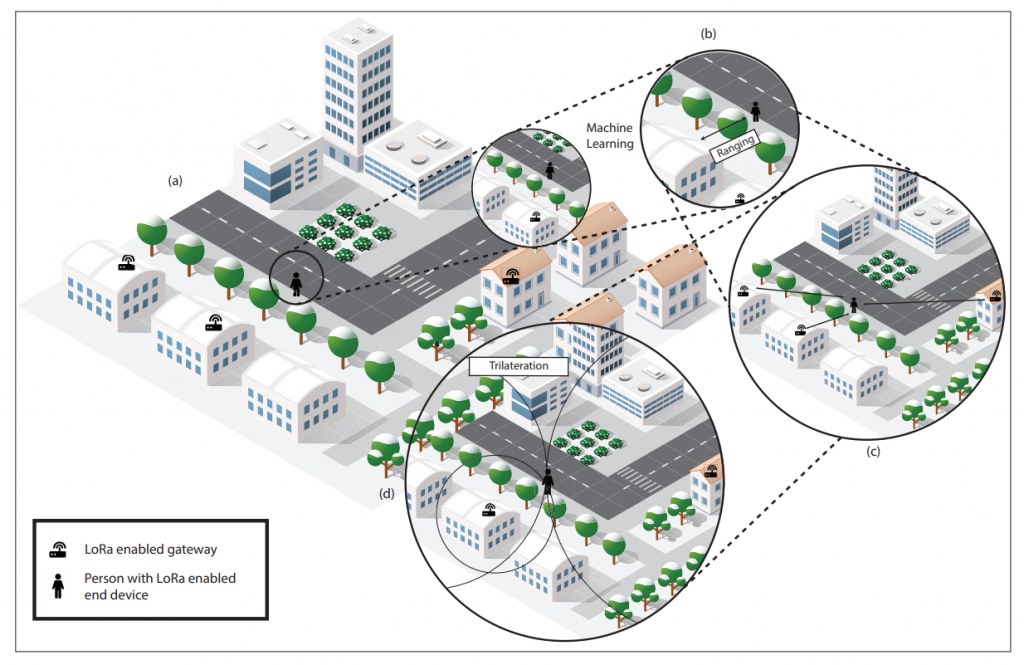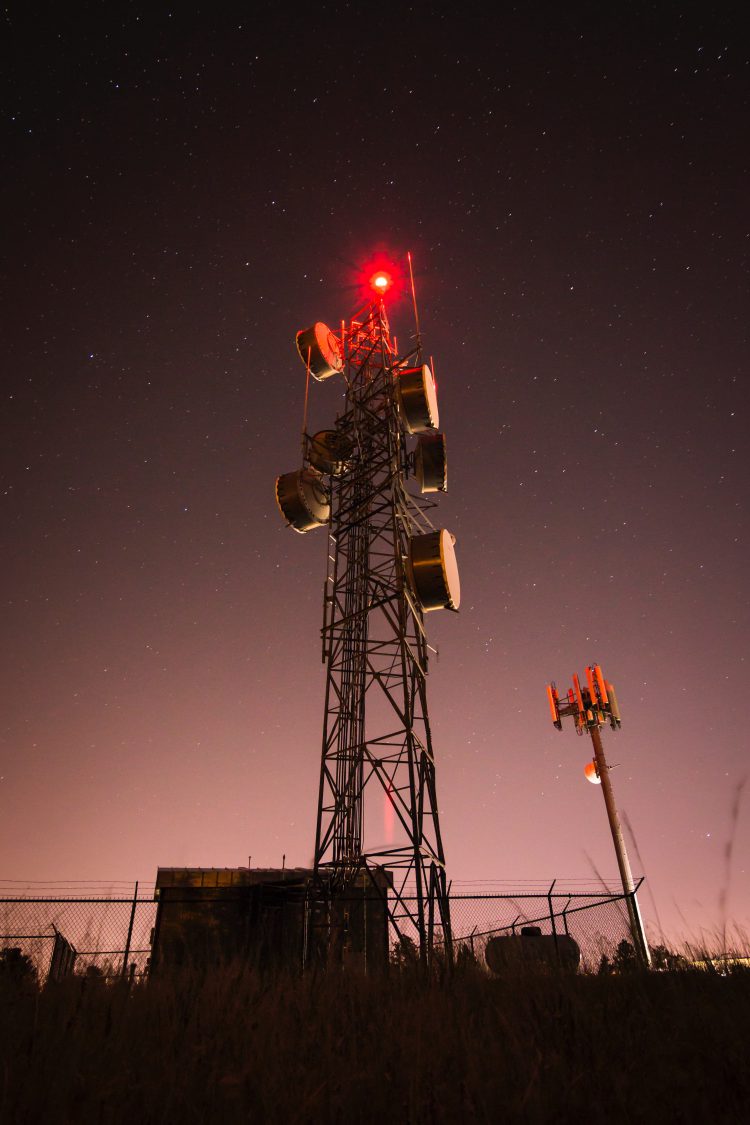The scale of wireless technologies penetration in our daily lives, primarily triggered by the Internet-of-things (IoT)-based smart cities, is beaconing the possibilities of novel localization and tracking techniques. With the development of 5G networks, the need for GPS free localization for the provision of location-based services is becoming more and more important. The inherent high-power consumption and line-of-sight (LOS) operation of GPS is not suitable for long-period indoor localization applications. All these factors introduce a need for the development of methods for accurate indoor localization. In this regard, many systems have been proposed that use Bluetooth for indoor localization of devices. The short-range of Bluetooth introduces high costs in the deployment of these systems, therefore, a low powered long-range solution was required that could allow for systems to be deployed within an area so as to remove the dependency on GPS without incurring a huge cost. Fig 1 illustrates a relationship of range and rates for various communication technologies.
Recently, low-power wide-area network (LPWAN) technologies have emerged as a solution to offer scalable wireless connectivity for smart city applications as shown in Fig 2. LoRa is one such technology that provides energy efficiency and wide-area coverage. We, at the IPT Lab, used intelligent machine learning techniques, such as support vector machines, spline models, decision trees, and ensemble learning, for received signal strength indicator (RSSI)-based ranging in LoRa networks, on a training dataset collected in two different environments: indoors and outdoors. The suitable ranging model was then used to experimentally evaluate the accuracy of localization and tracking using trilateration in the studied environments. Later, we compared it with the existing ZigBee, WiFi, and Bluetooth-based solutions.

Figure 1: Range and Data rate of Different Communication Technologies
The performance of earlier described ranging models was studied in estimating the distance of a node and, eventually, its position. For this purpose, we deployed LPS (Local Positioning System) in outdoor and indoor environments, first to collect RSSI data and train the ranging models and then to validate the models in finding the unknown location of a transmitting device.

Figure 2: Localization using trilateration
Our method introduced in [1] achieved an indoor accuracy of 9.38 m in an area of 4011.36 m2 (65.76 m x 61.0 m). The relative precision of our system is 6.8%. Our outdoor models provide a percentage error of 12.75% on all accounts. The mean absolute accuracy is 36.29 m in an area of 28,892 m2 (233 m x 124 m), which gives a mean percentage of outdoor accuracy of 85.68%. The difference in percentage accuracy of outdoor and indoor environments is compliant with the path loss model, which states a decrease in accuracy with an increase in distance.
This advanced research between Pakistan, Sweden, and Canada, explored the use of regression and machine learning (ML) models for RSSI-fingerprinting in LoRa networks and resource allocation in general communication networks. A thorough study has been conducted in [2] where based on the amount of data, the results showed that the ML approach towards RSSI fingerprinting provides promising results. This study is recently published in May 2020. We also provided case studies for the trilateration-based LPS and multi-hop LoRa networks published in a very prestigious magazine paper in [3]. The indoor implementation provided comparable results to the outdoor positioning system. The study proved LoRa as a feasible solution to the limitations of classical satellite navigation systems. Because of the train-then-test methodology, different ranging models can be trained for different environmental conditions, thus creating a more robust positioning system.
References:
[1] M. Anjum, M. A. Khan, S. A. Hassan, A. Mahmood, H. K. Qureshi and M. Gidlund, “RSSI Fingerprinting-based Localization Using Machine Learning in LoRa Networks”, IEEE Internet of Things Magazine 2020.
[2] F. Hussain, S. A. Hassan, R. Hussain, E. Hossain, “Machine Learning for Resource Management in Cellular and IoT Networks: Potentials, Current Solutions, and Open Challenges”, IEEE Communications Surveys and Tutorials, vol. 22 , No. 2, PP. 1251-1275, May, 2020. IF: 23.7
[3] M. S. Aslam, A. Khan, A. Atif, S. A. Hassan, A. Mahmood, H. K. Qureshi, M. Gidlund, “Exploring Multi-hop LoRa for Green Smart Cities”, IEEE Network Magazine, vol. 34 , No. 2, PP. 225-231, Apr, 2020. IF: 8.808
The author is the Director at Information Processing & Transmissions Lab and is also an Associate Professor at NUST School of Electrical Engineering and Computer Science. He can be reached at ali.hassan@seecs.edu.pk 

